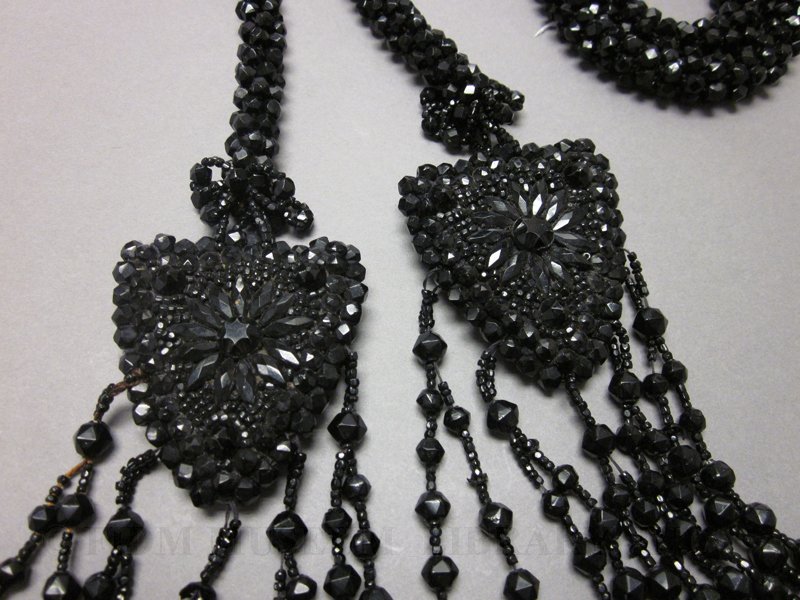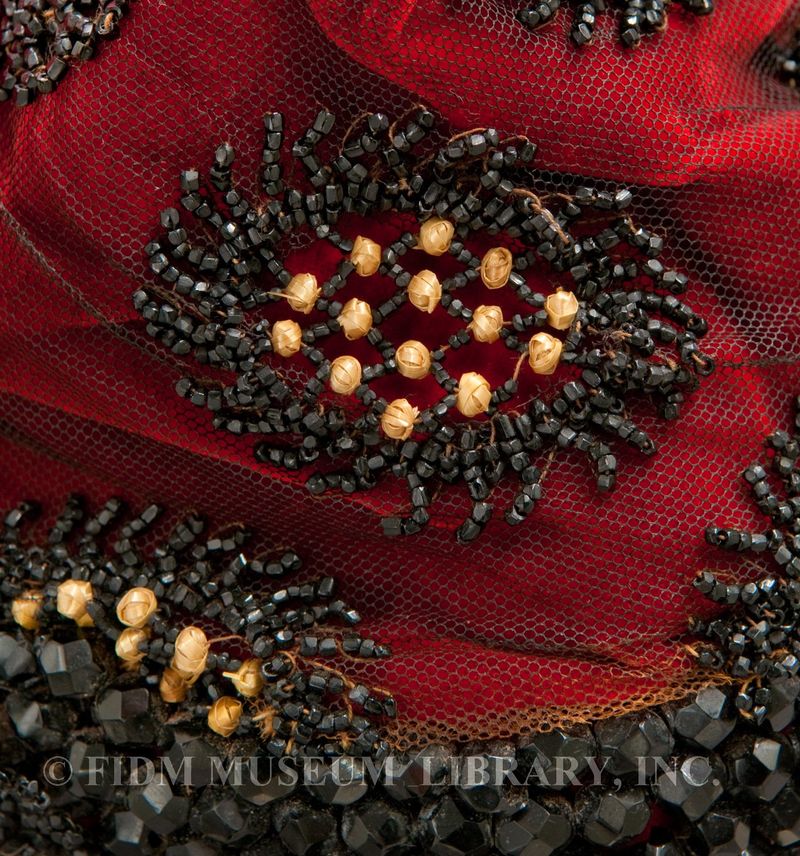Black Beauty
Though often used as a synonym for black, "jet" refers to a type of semi-precious stone formed from coal derived from fossilized driftwood. The finest jet came from Whitby, on the northeast coast of England, and could be polished to a smooth, matte finish or faceted to sparkle like black diamonds. "Many imitations in glass or other inferior materials have been made," an 1884 travel guide declared. "But, on account of the beautifully soft, velvety polish and intense blackness of the Whitby jet, it is not likely to be superseded.... The best Whitby jet will wear for years."1 An inexpensive substitute, called "French jet," was actually made of glass. It was easily detected, however, because it was cool to the touch; real jet felt warm.
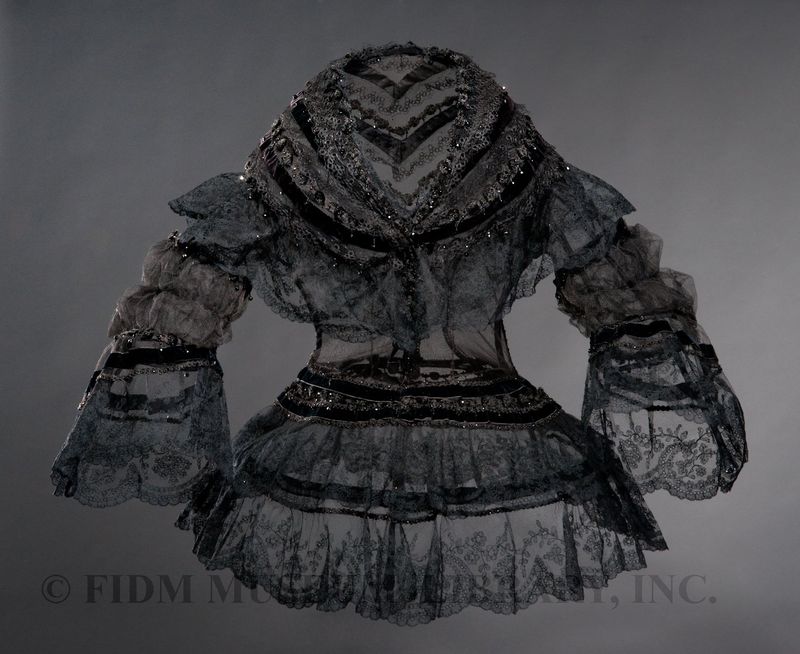 Jacket
Jacket
c. 1855
Museum Purchase
2008.5.44
Because of its ink-black hue and matte finish, jet was often worn as a substitute for colored stones, diamonds, and reflective trimmings during mourning, an important social ritual in the Victorian period. The use of jet on mourning garments seems to date to just before the death of Prince Albert, Queen Victoria's husband; the heartbroken queen popularized elaborate and prolonged mourning. Jet was used sparingly until the 1880s, when dresses were literally encrusted with jet beads, whether matte for mourning or faceted for fashion. The FIDM Museum has several jet-trimmed garments, including a reception gown by Charles Frederick Worth, a mantle by Emile Pingat, and the jacket above, which was probably a mourning garment. It is made of handmade floral-embroidered black net embellished with velvet ribbons and jet beads.
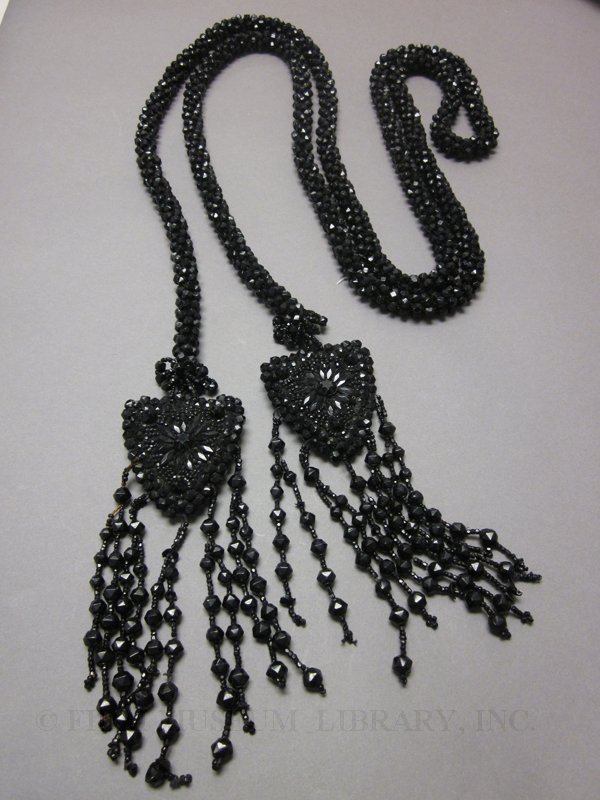
Sautoir
c. 1885
Museum Purchase
2008.5.13
Jet jewelry enlivened drab, black mourning garments; in the later stages of mourning, it could be faceted for added visual interest. This necklace composed of a long rope of faceted jet beads with fringed triangular pendants at each end was worn draped over the wearer's neck, with the ends hanging down the front of her gown, below her knees.
With its vivid red hue, the velvet toque below could not be mistaken from mourning dress. But, by the 1880s, jet was at the height of its popularity as a high-fashion ornament. Four rows of large, faceted jet beads edge the front of the hat; a few beads have fallen off over the years.
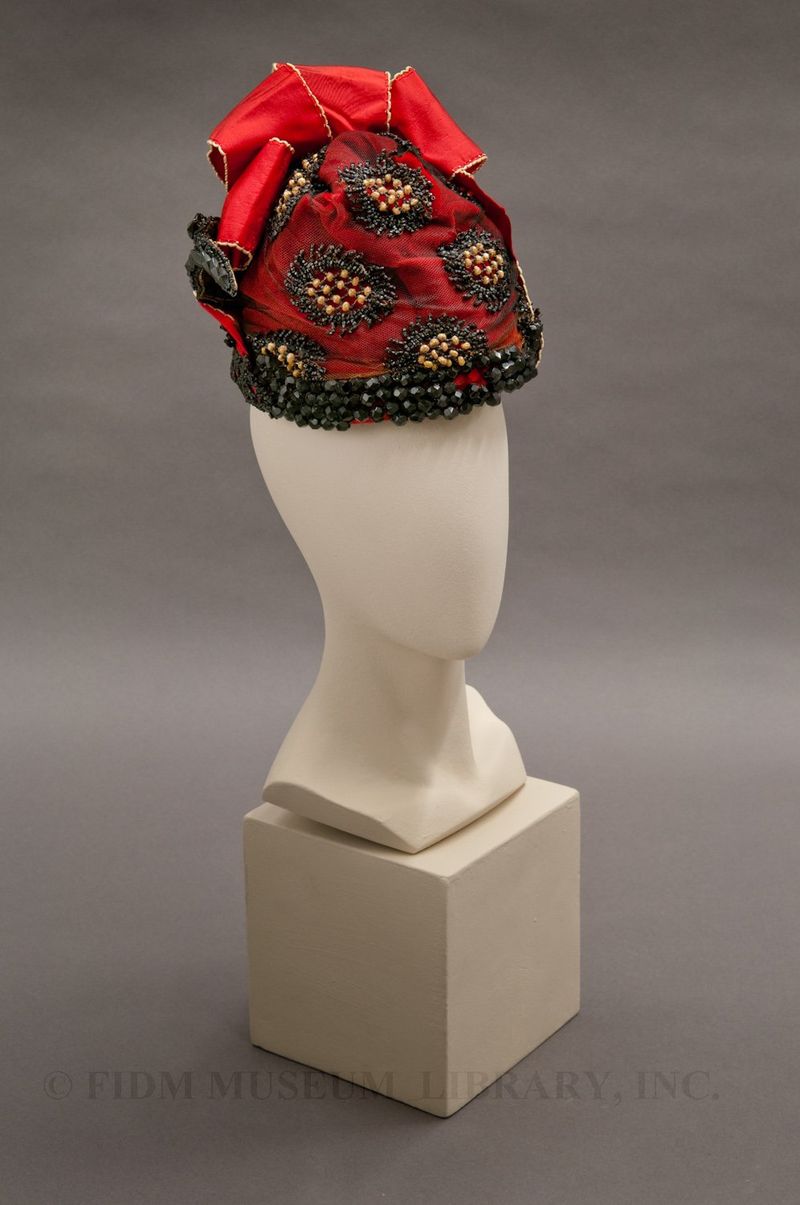 Toque
Toque
American
c. 1885
Museum Purchase
2009.5.10
A black mesh overlay is embroidered with fringed roundels of small faceted jet beads and straw-work knots. But the fashion for jet inevitably passed, and the decline of mourning rituals after World War I spelled the death of the Whitby jet industry.
1Thomas N. Bradley, Bradley's new guide to Whitby (Whitby: T. N. Bradley, 1884) 27-28.
